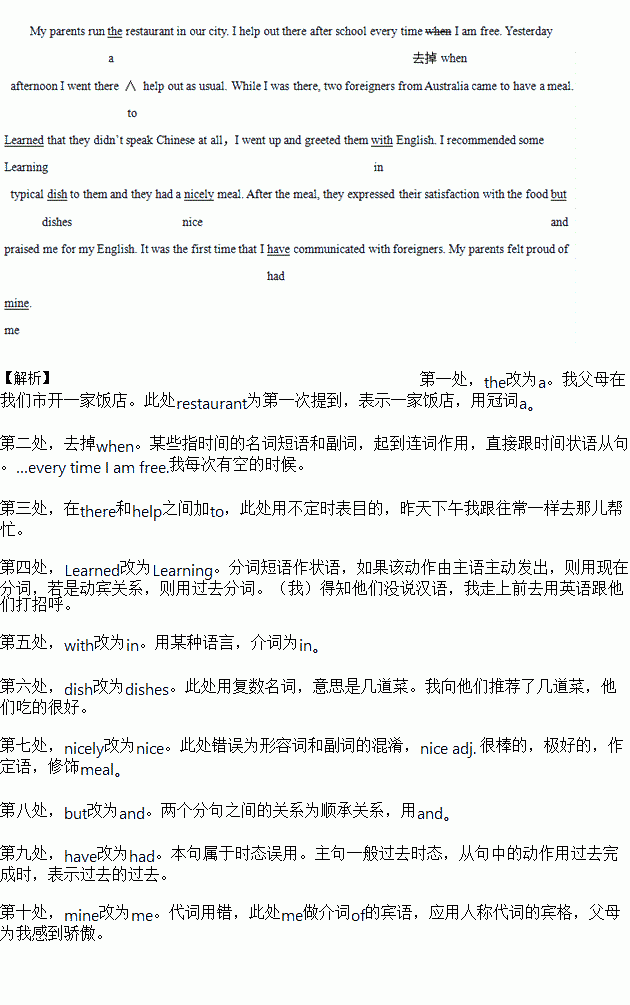题目内容
假定英语课上老师要求同桌之间交换修改作文,请你修改你同桌写的以下作文。文中共有10处错误,每句中最多有两处,错误仅涉及一个单词的增加,删除或修改。
增加:在缺词处加一个漏词符号(∧),并在其下面写出该加的词。
删除:把多余的词用斜线(\)划掉。
修改:在错的词下划一横线,并在该词下面写出修改后的词。
注意:1.每处错误及其修改均仅限一词。
2.只允许修改10处,多者(从第11处起)不计分。
My parents run the restaurant in our city. I help out there after school every time when I am free. Yesterday afternoon I went there help out as usual. While I was there, two foreigners from Australia came to have a meal. Learned that they didn’t speak Chinese at all,I went up and greeted them with English. I recommended some typical dish to them and they had a nicely meal. After the meal, they expressed their satisfaction with the food but praised me for my English. It was the first time that I have communicated with foreigners. My parents felt proud of mine.


 ape.
ape.